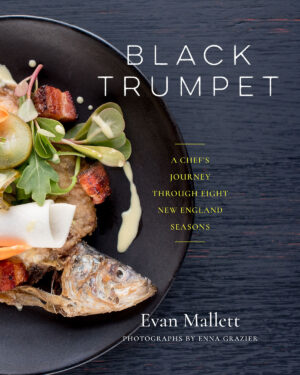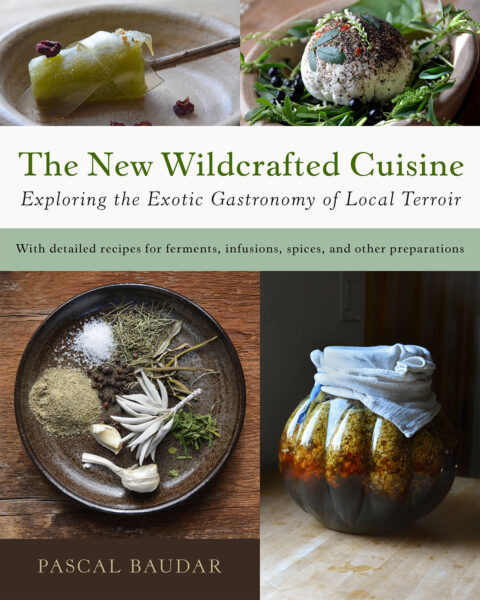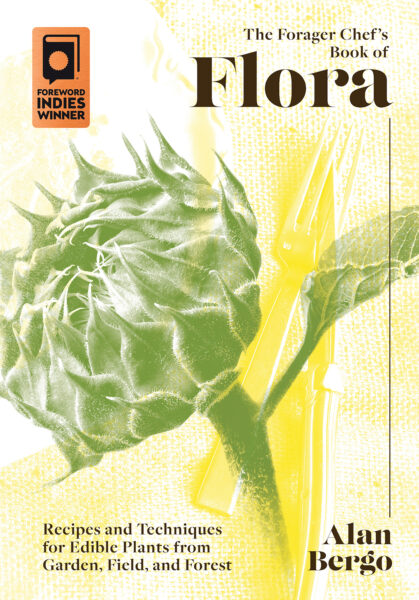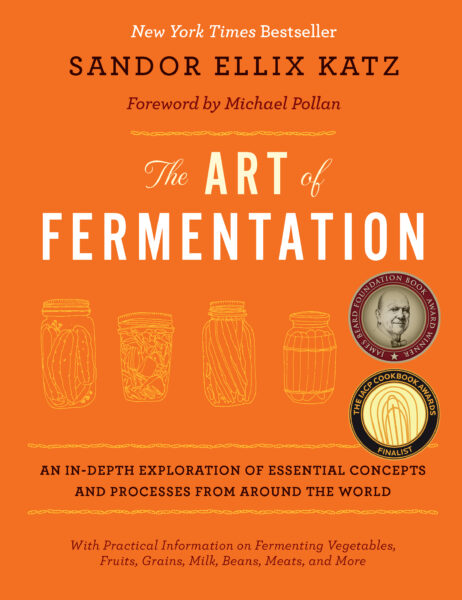The Perfect Slice: Watermelon Radish and Preserved Lemon Gremolata
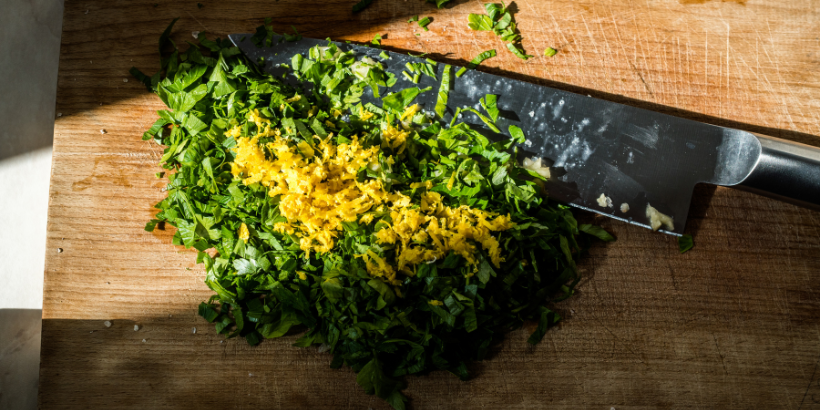
Gremolata is most commonly used for a final flourish of flavor to add a fresh taste to rich meaty dishes. This traditional Italian condiment is sprinkled over any number of dishes and it will make every mouthful pop with its bright flavor. It is a great addition to grilled meat, roasted or grilled vegetables, and pasta dishes.
This recipe uses watermelon radishes and preserved lemons, resulting in a fresh and flavorful combination.
The following is an excerpt from Black Trumpet by Evan Mallett. It has been adapted for the web.
RECIPE: Watermelon Radish and Preserved Lemon Gremolata
At the risk of offending home cooks, most folks don’t have in their possession sharp enough knives or the requisite skills to make beautiful gremolata, but I believe everyone can, and should, learn the basic culinary knife skills if he or she wants to execute food like a chef.
Gremolata, traditionally served with veal chops or other grilled meats, also tastes great on plump fish like halibut or grouper. On our menu, this particular gremolata garnished a braised beef short rib.
If you don’t have time to preserve lemons on your own, preserved lemons are increasingly common, available in most specialty food stores, especially those with Middle Eastern products.
Ingredients
- 1 large watermelon radish, brunoised (see Brunoise: Cuts to Create the Perfect Gremolata)
- 1 medium shallot, brunoised
- 1 large clove garlic, minced
- 2 tablespoons finely chopped flat-leaf fresh parsley
- 2 tablespoons finely chopped. fresh chervil
- 1⁄2 preserved Meyer lemon, the rind separated from the interior of the lemon, and brunoised (throw away the interior or save for a salad dressing or brine)
- 2 tablespoons plus 1 teaspoon olive oil
- 3⁄4 teaspoon salt
Procedure
Combine all the ingredients in a large bowl. Serve immediately, or refrigerate for up to 2 days.
Brunoise: Cuts to Create the Perfect Gremolata
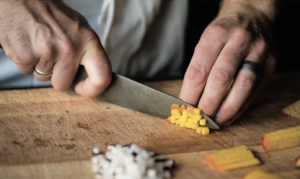 The French have given the world some sadistic things (not the least of them being the marquis who invented sadism), but for inexperienced cooks the invention of the brunoise is right up at the top of the list.
The French have given the world some sadistic things (not the least of them being the marquis who invented sadism), but for inexperienced cooks the invention of the brunoise is right up at the top of the list.
For making gremolatas and mignonettes, this cut is important. The uniformity of cuts gives all the proverbial players on the field equal playing time on the palate, and the diminutive size of the cut maximizes flavor in a short period of time.
And, a well-cut brunoise gives its creator bragging rights. When you serve a mignonette or gremolata at a party, you want to be able to boast, “Have you seen my brunoise?”
To execute this cut, and not your fingertips, follow these simple instructions.
For a shallot, top and tail the shallot, then cut it in half in the direction of the fiber. Peel the skin off both halves and place flat-side down. Parallel to the cutting surface, slide the sharp knife almost through the shallot four or five times in increments of 1⁄16 inch (0.2 cm).
Now cut in the same direction straight up and down, at the same increment, again not quite all the way through the shallot. Finally, perpendicular to the first two sets of cuts, keeping your fingertips away from the blade, cut straight up and down to form tiny shallot cubes.
For almost all other vegetables, begin by “squaring off” what nature gives us in a spherical or cylindrical form, snacking on the scraps, saving them for dipping in hummus or other dips, or adding them to a vegetable stock. The resulting rectangular cube can then be easily cut in minuscule, even intervals to resemble the shallot brunoise in size and shape.
For the lemon rind in the gremolata recipe, remove the rind, lay it flat on the board, and cut into thin strips and then crosswise into tiny cubes.
Recommended Reads
Recent Articles
Chances are, you’ve seen cattails growing on the edge of your local lake or stream at least once or twice. Instead of just passing these plants, try foraging for and cooking them to create delicious seasonal dishes! The following excerpt is from The New Wildcrafted Cuisine by Pascal Baudar. It has been adapted for the…
Read MoreGarlic mustard: while known as “invasive,” this plant can be consumed in its entirety and has great nutritional value. Plus, the garlic-flavor is a perfect addition to any recipe that calls for mustard! The following are excerpts from Beyond the War on Invasive Species by Tao Orion and The Wild Wisdom of Weeds by Katrina…
Read MoreOh, honeysuckle…how we love thee. If only there was a way to capture the sweet essence of this plant so we could enjoy it more than just in passing. Luckily, foraging and some preparation can help make that happen! Here’s a springtime recipe that tastes exactly like honeysuckle smells. The following excerpt is from Forage,…
Read MoreIntroducing…your new favorite brunch dish! This whole broccoli frittata is packed with fresh, wildcrafted flavors that are bound to help you start your day off on the right foot. The following is an excerpt from The Forager Chef’s Book of Flora by Alan Bergo. It has been adapted for the web. RECIPE: Whole Broccoli Frittata…
Read MoreWondering where to forage for greens this spring? Look no further than hedges, which serve as natural havens for wild greens and herbs! The following is an excerpt from Hedgelands by Christopher Hart. It has been adapted for the web. Food from Hedges: Salads and Greens Let’s start by looking at all the wild foods…
Read More

